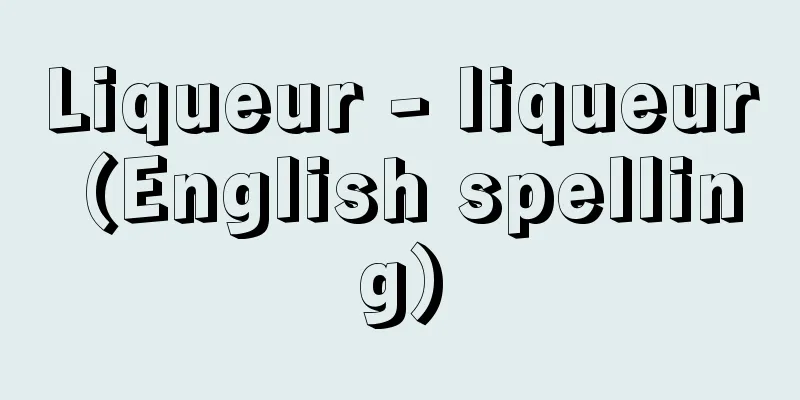Minagawa Kien

|
A Confucian scholar of the late Edo period. His given name was Gen and his pen name was Hakukyo. He was known by the pen names Kien, Kyosai, and Yuhisai, and was commonly known as Bunzo. He was born in Kyoto on December 8, 1712. His younger brother was Fujitani Nariakira, a scholar of Japanese classics. He received an elite education from an early age and studied under leading Confucian scholars, but from his teens he became interested in the meaning of Chinese characters and the study of divination, and during the An'ei and Tenmei eras (1772-1788) he synthesized these and advocated the study of Kaibutsu. Kaibutsu is the ability to grasp the meaning of characters through sound and to see "things" through their "names." Using this method, he redefined Confucian terminology and wrote "Meichu" (Preface, Tenmei 4). From 1759 (Horeki 9), he lectured on Confucianism in Nakadachiuri, Kyoto, and trained many Confucian scholars. His "Book of Students" lists over a thousand disciples, from nobles to commoners, including Matsuura Seizan, the lord of Hirado Domain. He also worked hard at writing, producing many works including "Kiyon Shiwa" (1771), "Mongaku Kyoyo" (1774), "Igaku Kaibutsu" (1813), "Jiji Shokai" (1813), and "Ekikai" (1813) on various Buddhist scriptures. He had a wide circle of friends among scholars and painters, and was a man of letters who enjoyed elegant pursuits and poetry, calligraphy, and painting. In 1805 (Bunka 2), he built the Kodokan in Kyoto, but passed away two years later on May 16, Bunka 4, at the age of 74. [Hiromi Takahashi July 19, 2016] ``Japanese Philosophy Series 47 Late Modern Confucian Collection'' (1972, Iwanami Shoten)'' ▽ ``Chinese Literature Series 4: Detailed explanation of imaginary characters'' (1980, Kunkoshoin)'' ▽ ``Kokukin Kaiji Commentary ``Supported Characters Detailed Explanation'' (Benseisha, Benseisha Bunko)'' [References] | |Source: Shogakukan Encyclopedia Nipponica About Encyclopedia Nipponica Information | Legend |
|
江戸後期の儒者。名は愿(げん)、字(あざな)は伯恭(はくきょう)。淇園、筇斎(きょうさい)、有斐斎(ゆうひさい)と号し、通称文蔵。享保(きょうほう)19年12月8日京都生まれ。国学者富士谷成章(ふじたになりあきら)は実弟。幼少より英才教育を受け、一流の儒者に就いて学んだが、10代のころから漢字の字義と易学に関心をもち、安永(あんえい)・天明(てんめい)年間(1772~1788)にそれらを総合して開物(かいぶつ)学を提唱した。開物とは、字義を音声によって把握し、「名」によって「物」がみえてくるようにすることである。この方法で儒学用語を定義し直して『名疇(めいちゅう)』(天明4年序)を著した。1759年(宝暦9)より京都・中立売(なかだちうり)室町西入町で儒学を講じて多くの儒者を養成した。その「受業門人帳」には公卿(くげ)から庶民まで門弟千数百人を数え、平戸藩主松浦静山(まつらせいざん)も門人であった。一方、著述にも努め、『淇園詩話』(1771)『問学挙要』(1774)『易学開物』『助字詳解』(1813)、諸経書の『繹解(えきかい)』など多数がある。学者や画家などとの交友も広く、風雅に遊んで詩書画をよくする文人でもあった。1805年(文化2)京都に弘道館を建てたが、2年後の文化(ぶんか)4年5月16日、74歳で没した。 [高橋博巳 2016年7月19日] 『『日本思想大系 47 近世後期儒家集』(1972・岩波書店)』▽『『漢語文典叢書 4 虚字詳解』(1980・汲古書院)』▽『国金海二解説『助字詳解』(勉誠社・勉誠社文庫)』 [参照項目] | |出典 小学館 日本大百科全書(ニッポニカ)日本大百科全書(ニッポニカ)について 情報 | 凡例 |
Recommend
Adbuta Brahmana
...The fact that Indians have had an interest in ...
Kantaka system - Kantaka system
In the late Middle Ages, it was used as a concept...
Synoptic meteorology
...For example, the field that studies very small...
Constantius I, Flavius Valerius
250-306 Roman Emperor. Reigned 293-305, 305-306. A...
Bana (English spelling)
...Many other playwrights emerged, including Bhaṭ...
The Emperor of the Church - Kyoshu Dokun Kotei
…As a result, in 1123 (Xuanhe 5), the Song was al...
Henry I - Henry
Norman King of England (reigned 1100-1135). Son of...
Affine geometry
Affine geometry is a geometry that removes the co...
Shin Chae-ho
A Korean independence activist and historian who e...
Stone Throwing Battle - Ishinage Gassen
... The samurai era's Injida was still practi...
Five Barbarians and Sixteen Kingdoms
The group of nations that rose and fell in northe...
Spruce
Also known as Kuroezo. An evergreen tall tree of t...
Vazrazhdane
…a cultural movement widespread among the peoples...
Il Moro - Il Moro
…He was especially known as the patron of Leonard...
Gomberg, M.
…In the Wittig reaction, the intermediate ylide p...









